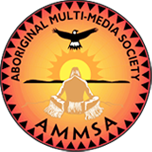Article Origin
Volume
Issue
Year
Are Aboriginal children in North Western Ontario still paying the price of a 46-year-old environmental crime?
Cerebral palsy, developmental delays and seizures are symptoms of mercury poisoning, and they are conditions that community members at Asubpeeschoseewagong (Grassy Narrows) are noticing with concern among their young.
"A lot of children are being born with epilepsy," said Maria Swain-Korshever, who has a grand-daughter and a nephew who suffered seizures in their first year.
Her granddaughter Robin was rushed to hospital in Kenora when she suffered her first episode at the age of eight months. Hospital staff initially suspected abuse by the parents, but were quickly set straight by the family doctor.
There was no diagnosis. "They didn't even really bother to check her out, they more or less just sent her home, oh, she's going to be okay," Swain-Korshever recalled.
The next time the child went into seizures, the family was in Thunder Bay. "I'm glad that it happened there," she said. Hospital staff "got on top of it right away, they did all kinds of tests and they found that one side of her brain wasn't fully developed."
Medication that Robin may have to take for the rest of her life now controls the condition. But her case isn't isolated.
Another mother tells of waking in the middle of the night to find her baby son shaking and unresponsive. He was rushed to a hospital and is presently on medication to keep him stable.
Swain-Korshever believes a variety of health problems at Grassy can all be traced back to one culprit mercury.
The Dryden Paper Company started dumping mercury waste into the Wabigoon River in 1962. The practice went undetected for eight years and wasn't stopped until 1975, by which time an estimated 20,000 pounds of inorganic mercury had entered the English-Wabogoon River system, with another 20,000 pounds discharged to the air.
It took until 1986 for Grassy Narrows and Wabaseemoong (Whitedog) to obtain a $16 million settlement, and the establishement of a fund, overseen by the Mercury Disability Board, to make payments to those whose health had been damaged by the mercury.
Community leaders thought the funds would bridge the gap to the future; a future in which natural processes would have cleansed the land and waters and healthy new generations could rebuild their shattered communities.
"The scientists at the time said this is not going to affect your children, it's going to be out of the system in 30 years," said Leanne Simpson, a biologist who specializes in indigenous knowledge.
"Here we are 30 years later and our research is showing that it's not out of the system."
Simpson is the principal investigator in a multi-year contaminants study funded by Health Canada that is being coordinated by Judy DaSilva of Grassy Narrows.
The latest study, to be completed next year, includes for the first time the two other communities that were hit by the mercury contamination - Whitedog and Wabauskang First Nation.
Now part of Wabauskang are the survivors and descendents of a small Aboriginal community of about 60 people that lived in Quibel, just north of Vermilion Bay. They were the first hit by the contamination but didn't learn of it and the ensuing compensation to Grassy Narrows and Whitedog until 1987.
A Toronto law firm is presently looking into the compensation issue but it will come too late for Elders like Bertha Petiquan, who died of cancer last year at the age of 89.
Her daughter, 69-year-old Betty Riffel, coordinates the contaminants study for her community. The work is the fulfillment of a promise she made 60 years ago as a nine-year-old girl when she watched her baby brother Donald die at the age of nine months.
"He lived longer than the other babies," she recalled. "I counted 11 babies that died there. They all died the same way, they had seizures. I always remember my little brother having seizures until he died."
DaSilva said concern for the children in her community was a major trigger in her push to get information. She said there have been miscarriages, abnormal births, cancers and, most visibly, the seizures.
"I worked in a day care and I used to see it right there and I'd hear parents saying that their child was having seizures."
"It's very difficult from a scientific perspective and from a medical perspective to demonstrate a cause and effect relationship," Simpson said.
Another issue is that, in a community where fish has traditionally been a central part of the diet, not everyone follows Health Canada's fish consumption guidelines. Some, by contrast, are so fearful that they avoid traditional foods, leading to other health problems related to Western-style diets.
This is a community where fish is a central part of the diet. Contaminant levels vary some fish (the higher end predators) and some lakes are more contaminated, all pointing to the need for caution and continually updated information.
There are many unanswered questions at Grassy Narrows and its neighbouring communities, and one is whether there is a higher incidence of illness among children.
"What the community is saying and what those Elders are saying is that there is," Simpson noted. "and I think what I haven't seen is science and government being able to demonstrate scientifically that there isn't a problem.
"One of the things that the so called resolution to the mercury problem didn't touch on is long-term health studies that would indicate the community is healing or the community is not healing."
Instead, monitoring of the after-effects of a major industrial disaster has been left to the community, she said.
Health Canada was unable to provide responses to questions about mercury levels and the incidence of health problems among children in the affected communities by press time.
- 2194 views
